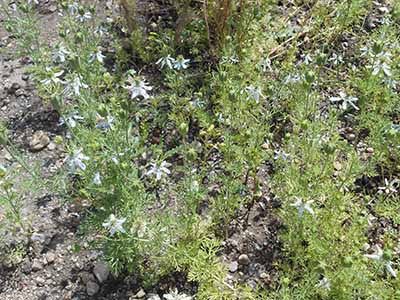Nigella sativa (Ranunculaceae)


| ENG | Nigella, black cumin |
| SK | Černuška siata, rasca čierna |
| CZ | Černucha setá |
| PL | Czarnuszka siewna |
| HU | Kerti katicavirág |
Using
The dry-roasted nigella seeds can be used as a "pepper" in recipes with fruit, vegetables, salads and poultry. In some cultures, the black seeds are used to flavor bread products. Nigella is also used as part of the spice mixture. Mainly for its seed oil extract N. sativa is under research for its potential to affect human diseases, such as cancer or medical conditions as dyspensiad, although studies for clinical efficacy. According to some proponents it is the most effective form to consume black cumin oil. Oil is more concentrated than whole unpressed seeds and easier to absorb. Enough dose is 1 teaspoon of oil per day.
| I. | II. | III. | IV. | V. | VI. | VII. | VIII. | IX. | X. | XI. | XII. | |||||||||||||
| Sowing outside | ||||||||||||||||||||||||
| Sowing inside | ||||||||||||||||||||||||
| Transplant autside | ||||||||||||||||||||||||
| Harvest | ||||||||||||||||||||||||
Botanical description and occurrence:
Nigella sativa is an annual flowering plant in the family Ranunculaceae, native to south and southwest Asia. It grows to 20–30 cm tall, with finely divided, linear leaves. The flowers are delicate, and usually colored pale blue and white, with five to ten petals. The black caraway fruit is a large and inflated capsule composed of three to seven united follicles, each containing numerous seeds. The seeds are used as spice, sometimes as a replacement for black cumin (Bunium bulbocastanum).
Why to have the plant in your garden:
Nigella is one of annuals, which grow for beauty and utility. It has a place among the ornamental garden plants and is grown as so called “Black cumin or Black caraway”, which is used in folk medicine, but also serves as spicy. Black Cumin is a medicinal spice that appears to be active in the dose used to season food products. It has a potent bioactive known as thymoquinone which shows promise in treating epilepsy, allergies, and boosting the immune system.
Text:
Magdaléna Valšíková

